Explore Kanazawa - Japan Travel, Asia
Tucked away on the western coast, Kanazawa is Japan’s hidden gem awaiting discovery. Known for its rich cultural heritage, stunning gardens, and well-preserved historical districts, this city offers a perfect blend of old-world charm and modern attractions. Whether you're an avid history buff, a food lover, or an art enthusiast, Kanazawa has something to captivate your interest. Let’s discover the best of what Kanazawa has to offer that will ensure your memorable and enriching trip.
Ready to dive deeper into Japan's wonders? Discover our premium Japan tours here for an extraordinary experience.
Population: Approximately 466,000 in 2018.
Economy: For Ishikawa Prefecture, Kanazawa serves as a major regional transportation and commercial center. It is a popular tourist site and is still well-known for its traditional handicrafts sector, which includes the creation of Kutani ware pottery.
Landmarks: Famous for the Kenrokuen Garden, Kanazawa Castle, and Omicho Market.
Japan
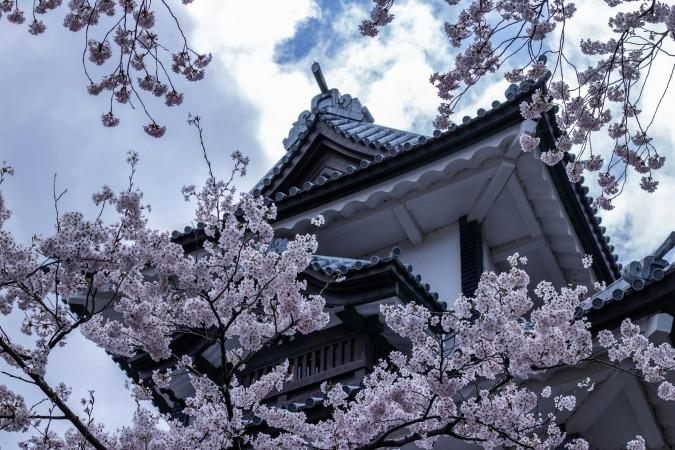
Overview of Kanazawa
History & Culture Influence
Kanazawa's history is as rich as its culture. The Maeda clan, who ruled over the late 16th-century city and made significant investments in the arts and education, caused it to develop. This period saw the construction of Kanazawa Castle and the creation of Kenrokuen Garden, one of Japan's most famous gardens. The city's samurai and geisha districts offer a glimpse into its storied past. These areas highlight Kanazawa's dedication to preserving its cultural heritage.
Interaction with The Locals
Kanazawa, with a population of approximately 466,000 residents, is a vibrant city located in the Ishikawa Prefecture on Japan's west coast. The people of Kanazawa are known for their warm hospitality and deep appreciation for their city's rich history and cultural heritage. Many locals take pride in preserving traditional crafts, such as Kutani pottery and gold leaf production, which have been passed down through generations. This blend of historical reverence and modern living creates a unique and welcoming atmosphere for visitors.
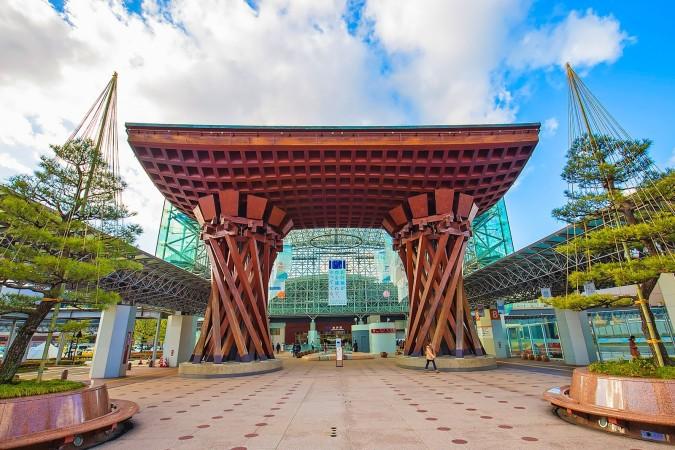
Tsuzumi-mon Gate in Kanazawa - © orpheus26
Top Attractions in Kanazawa
Kanazawa is home to a myriad of attractions that capture its historical essence and modern allure. Whether you're a history buff, an art enthusiast, or a nature lover, Kanazawa has something to offer.
Kenrokuen Garden
Considered one of Japan's three most beautiful landscape gardens, Kenrokuen is a must-visit. This sprawling garden is renowned for its seasonal beauty, featuring plum and cherry blossoms in spring, irises in summer, colorful leaves in autumn, and snowy landscapes in winter. Its meticulously designed layout includes ponds, streams, waterfalls, and teahouses, making it a peaceful retreat in the heart of the city.
Kanazawa Castle
Adjacent to Kenrokuen, Kanazawa Castle is a symbol of the city's historical significance. The castle, originally built in the late 16th century, has undergone extensive restoration. Visitors can explore the castle's impressive gates, walls, and turrets, and learn about the feudal era through informative exhibits. The surrounding grounds, with their lush greenery and scenic views, are perfect for a leisurely stroll.
Higashi Chaya District
Step back in time in the Higashi Chaya District, where traditional wooden tea houses line the streets. This well-preserved area offers a glimpse into Kanazawa's geisha culture. You can visit teahouses where geishas still perform, enjoy matcha tea, and purchase local crafts. The district's charming atmosphere and historical significance make it a favorite among visitors.
Omicho Market
As the biggest food market in the city, this traditional market has been there since the Edo era and was known as "Kanazawa's Kitchen” by both the locals and outsiders. Locals and visitors gather at this busy center to savor a wide selection of street cuisine, fresh fish, and locally grown veggies. Strolling through the market, you'll encounter a vibrant atmosphere and have the opportunity to taste Kanazawa's culinary delights.
Myoryuji Temple (Ninja Temple)
Myoryuji Temple, sometimes referred to as Ninja Temple, is well-known for its clever architecture and concealed fortifications. Despite its name, it wasn't actually home to ninjas but was built with various traps and secret passageways to protect against intruders. Guided tours provide fascinating insights into the temple's clever architecture and historical context.
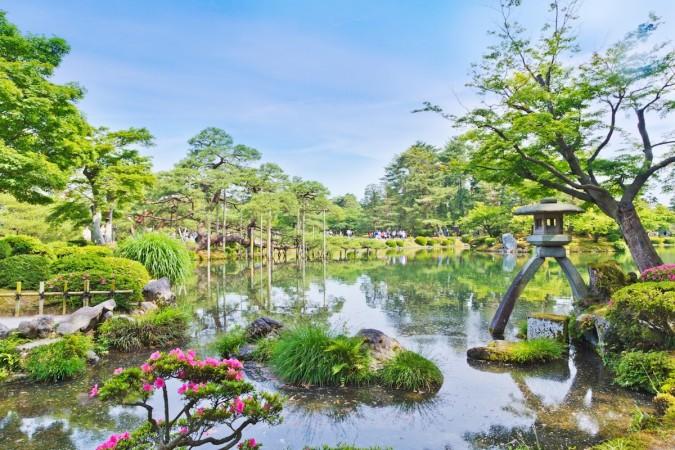
Kenrokuen Garden - © Japan Tourism
Must-Try Dishes in Kanazawa
Kanazawa offers a culinary journey that reflects its rich cultural heritage and coastal location. The city's cuisine is a delightful mix of traditional flavors and fresh ingredients, making it a paradise for food lovers.
- Jibuni: A typical Kanazawa meal includes cooked duck or chicken with vegetables in a rich broth that has been thickened with wheat flour. This hearty and comforting dish is a must-try for anyone looking to experience authentic Kanazawa cuisine.
- Gold Leaf Ice Cream: A unique treat that Kanazawa is famous for is gold leaf ice cream. This luxurious dessert is soft-serve ice cream wrapped in a thin layer of edible gold leaf, reflecting the city's long history of gold leaf production. It's both visually stunning and delicious.
- Kanazawa Curry: A distinctive style of Japanese curry that is thicker and richer than typical curry, served with shredded cabbage and a pork cutlet. The dark, flavorful sauce is a local specialty and a favorite comfort food.
- Kabura-zushi: The traditional fermented meal known as kaburaya-zushi is specific to Kanazawa. It is made from rice malt-pickled yellowtail fish layered between slices of salted turnip. This dish, usually enjoyed in winter, offers a tangy and umami-rich flavor that is quite distinctive.
- Hanton Rice: Hanton Rice is a beloved local dish that features an omelet stuffed with ketchup-flavored fried rice, topped with a fried white fish filet, and finished with tartar sauce. Western and Japanese cooking techniques are combined to create this filling and substantial supper.
- Nodoguro Sushi (Blackthroat Seaperch): Nodoguro, or blackthroat seaperch, is a high-quality fish that is a delicacy in Kanazawa. It enhances the rich, meaty flavor when grilled or served as sashimi. This prized fish is a must-try for seafood lovers.
- Fugu Sashimi (Pufferfish): For the adventurous eater, Kanazawa offers fugu, or pufferfish. This potentially lethal delicacy is prepared by highly trained chefs. Enjoy fugu sashimi, hot pot, or deep-fried, and experience the unique texture and subtle flavors.
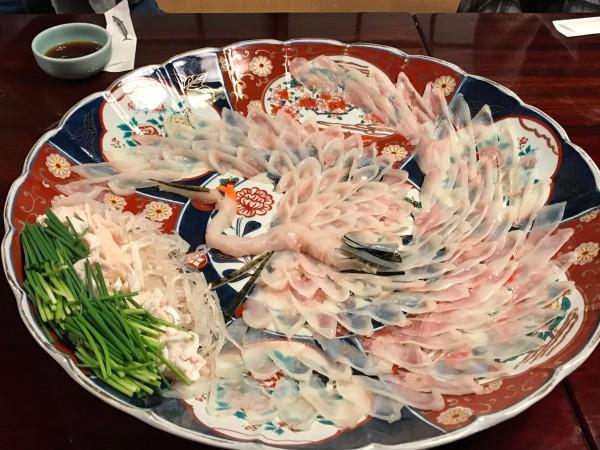
Fugu Sashimi - © MoshiMoshi
Festivals & Local Celebrations
Kanazawa's festivals and celebrations provide a glimpse into the city's rich cultural tapestry. These events are vibrant, colorful, and steeped in tradition, offering visitors a unique opportunity to experience local customs and festivities.
Kanazawa Hyakumangoku Festival
The Kanazawa Hyakumangoku Festival, held annually in June, is one of the city's most celebrated events. It commemorates the arrival of Lord Maeda Toshiie to Kanazawa Castle in 1583, marking the beginning of the prosperous Kaga Domain. The festival's main highlight is the grand parade, where participants dressed in historical costumes reenact the triumphant entry. The streets come alive with traditional music, dance performances, and spirited drumming. The event culminates with a beautiful lantern floating ceremony on the Asano River, symbolizing peace and prosperity.
Seihakusai Festival
The Seihakusai Festival, taking place in May, is one of Kanazawa's oldest and most dynamic festivals. It is dedicated to the deity of the Oyama Shrine, and its main attraction is the parade of massive wooden floats known as "deko-yama." These floats are elaborately decorated with carvings, tapestries, and ornaments, and are pulled through the streets by teams of locals. The festival features taiko drumming, traditional dances, and musical performances. The vibrant atmosphere and the sheer scale of the floats make Seihakusai a captivating experience.
Asano River Fireworks Festival
Every summer, the Asano River Fireworks Festival lights up the Kanazawa night sky. Held in late July, this event attracts thousands of visitors who gather along the riverbanks to enjoy the spectacular fireworks display. The festival features a series of pyrotechnic shows synchronized with music, creating a breathtaking visual and auditory experience. Food stalls line the streets, offering a variety of local snacks and treats, making it a fun and festive evening for all.
Kenrokuen Yukitsuri
Kenrokuen Yukitsuri is a winter event that showcases the traditional practice of yukitsuri, where ropes are used to support the branches of trees to protect them from heavy snowfall. This event, which runs from November to March, transforms Kenrokuen Garden into a winter wonderland. Visitors can enjoy the serene beauty of snow-covered landscapes, illuminated by delicate lights. The event underscores Kanazawa's deep connection to nature and its dedication to preserving its historic gardens.
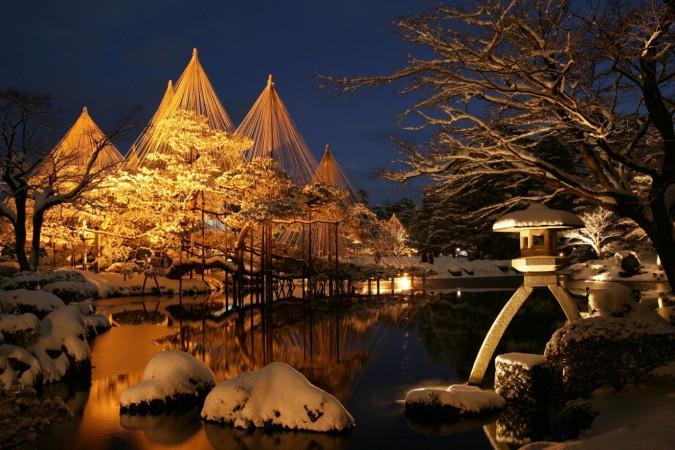
Kenrokuen Yukitsuri - © Visit Kanazawa
What to Do in Kanazawa
Kanazawa offers a wide range of activities that cater to different interests, ensuring that every visitor can find something enjoyable to do.
- Japanese Tea Ceremonies: Participating in a traditional tea ceremony is a quintessential Kanazawa experience. You can learn about the art of tea preparation and enjoy matcha tea in a serene setting, often within historical teahouses or beautiful gardens like Kenrokuen.
- Pottery Workshops: Kanazawa is known for its Kutani pottery, and taking part in a pottery workshop allows you to create your own piece of art. These hands-on experiences provide insight into traditional crafting techniques and make for a memorable souvenir.
- Kimono Dressing: For a truly immersive experience, try kimono dressing. You may visit Kanazawa's historical neighborhoods while dressed traditionally by renting kimonos from a number of stores that provide dressing services. It's a great way to feel connected to Kanazawa's cultural past.
- Outdoor Activities: Nature enthusiasts can enjoy hiking and cycling in the scenic surroundings of Kanazawa. The nearby mountains and parks offer numerous trails and picturesque views. Additionally, the city's hot springs provide a relaxing way to unwind after a day of exploration.
Shopping in Kanazawa
Kanazawa is a shopper's paradise, offering everything from traditional crafts to modern fashion. The city's shopping districts are bustling with energy and brimming with unique items that make perfect souvenirs.
- Kanazawa Station Area: The area around Kanazawa Station is a convenient shopping hub. You'll find department stores like Forus and Kanazawa Hyakubangai, offering a mix of fashion, accessories, and local products. It's a great place to start your shopping spree.
- Korinbo and Katamachi: Korinbo and Katamachi are two of Kanazawa's most popular shopping districts. Korinbo features high-end boutiques and department stores, while Katamachi offers a lively nightlife scene with bars, restaurants, and shops. Both areas provide a diverse shopping experience.
- Traditional Crafts: Kanazawa is renowned for its traditional crafts, and several shops specialize in items like Kutani pottery, Wajima lacquerware, and gold leaf products. Visit shops in the Higashi Chaya District or the Nishi Chaya District to find these exquisite crafts. The Kanazawa Noh Museum and Kanazawa Yasue Gold Leaf Museum also have gift shops with beautifully crafted items.
- Omicho Market: For a more local shopping experience, head to Omicho Market. In addition to fresh produce and seafood, the market has stalls selling local snacks, kitchenware, and souvenirs. It's an ideal place to pick up unique gifts and enjoy the vibrant market atmosphere.
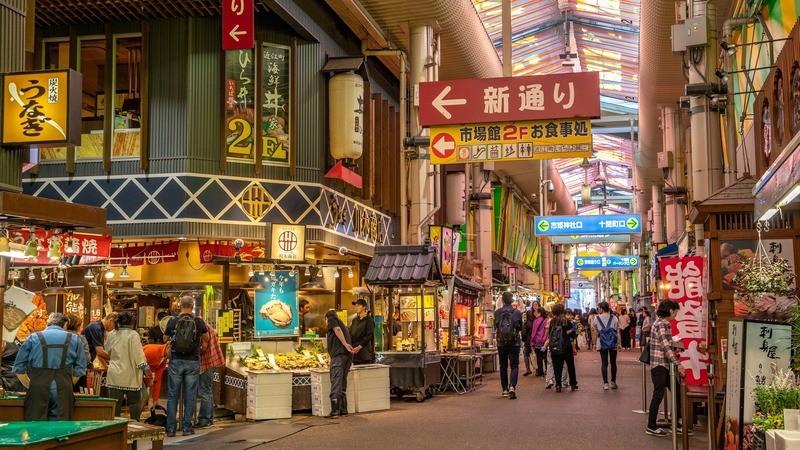
Omicho Market - © Japan Tourism
Weather in Kanazawa: Best Time to Visit
Kanazawa experiences a humid subtropical climate with four distinct seasons, each offering unique experiences and tourism trends.
Spring in Kanazawa
- Weather: Kanazawa experiences a moderate springtime, with highs of 10°C to 20°C (50°F to 68°F). This season is marked by blooming cherry blossoms and pleasant weather.
- Tourism Trend: Spring is a popular time for tourists to visit Kanazawa due to the cherry blossom season. Kenrokuen Garden and the Saigawa River become picturesque spots for hanami (flower viewing) parties. Visitors also enjoy strolling through the city’s historical districts and participating in outdoor festivals like the Kanazawa Hyakumangoku Festival.
Summer in Kanazawa
- Weather: Summers are warm and humid, with temperatures averaging between 20°C and 30°C (68°F to 86°F). Rainfall is frequent, and as a result, the city's surroundings are lush and verdant.
- Tourism Trend: Despite the humidity, summer is an exciting time in Kanazawa, with numerous festivals and outdoor events. The Asano River Fireworks Festival is a major highlight, drawing large crowds for its spectacular pyrotechnic displays. Visitors also enjoy the city’s parks and gardens, taking advantage of the warm weather to explore and attend seasonal events.
Autumn in Kanazawa
- Weather: Autumn brings cooler temperatures, ranging from 10°C to 25°C (50°F to 77°F), and is characterized by stunning fall foliage.
- Tourism Trend: The breathtaking foliage in the autumn makes it one of the best times of year to visit Kanazawa. The city’s parks, gardens, and historical districts are adorned with vibrant hues of red, orange, and yellow. Autumn is also a time for food festivals celebrating seasonal ingredients like mushrooms and chestnuts, making it a great season for culinary tourism.
Winter in Kanazawa
- Weather: Temperatures throughout the winter range from 0°C to 10°C (32°F to 50°F), making it the coldest time of the year. Kanazawa often experiences heavy snowfall, creating a winter wonderland.
- Tourism Trend: Winter offers a unique experience in Kanazawa, with the city’s landscapes transformed by snow. The Kenrokuen Garden’s yukitsuri (snow suspension) is a notable attraction, providing a serene and picturesque setting. Winter is also the season for enjoying hot springs and savoring hearty local dishes like crab and other seafood.
Explore the unique charm of Mito, another must-visit place in Japan, in our article here.
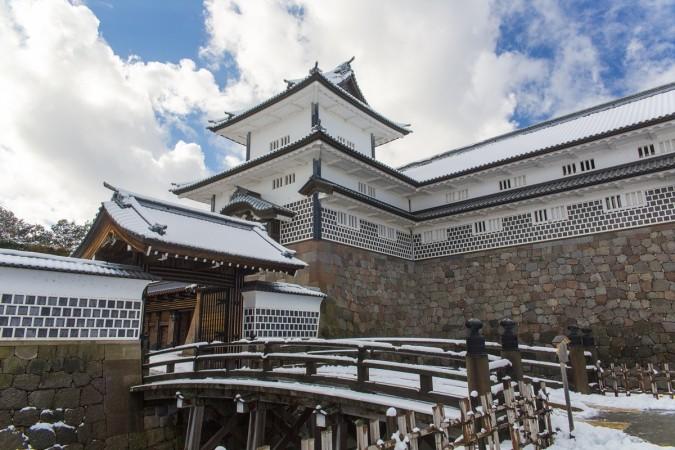
Kanazawa Castle in winter - © Pixabay
Culture Etiquette in Kanazawa
- Yukitsuri (Snow Suspension): In winter, Kanazawa uses yukitsuri to protect trees from heavy snow. Ropes are tied to branches to prevent breakage, creating a beautiful snow-covered landscape, especially in Kenrokuen Garden.
- Omotenashi (Japanese Hospitality): Omotenashi emphasizes exceptional service and care for guests. Kanazawa’s hospitality is evident in its meticulous service and warm welcome in hotels, restaurants, and everyday interactions.
- Traditional Tea Ceremony: Experience the Japanese tea ceremony, or "chanoyu," in Kanazawa. This ritual involves the careful preparation and serving of matcha tea, offering insight into Japanese aesthetics and mindfulness.
- Chaya District Etiquette: In Kanazawa's historic Chaya districts, such as Higashi Chaya, respect the privacy of geisha and traditional tea houses. Photography should be done with permission, and modest dress is appreciated.
- Soba Noodles Custom: Kanazawa is famous for its soba noodles. Slurping noodles loudly is a traditional practice that shows appreciation for the meal and enhances flavor.
Want to know about Tsukuba? Check out our insights here and see why it's worth a visit.
Essential Travel Information
Getting Around Kanazawa
Kanazawa offers a range of convenient transportation options to explore the city and its surroundings. The main transportation hub connects Kanazawa with major destinations across Japan, including fast and efficient travel options to nearby cities. The city is also bike-friendly, with numerous rental shops and bike-sharing programs available. Taxis are easily accessible for short trips or carrying luggage, and many of Kanazawa’s attractions are within walking distance of each other.
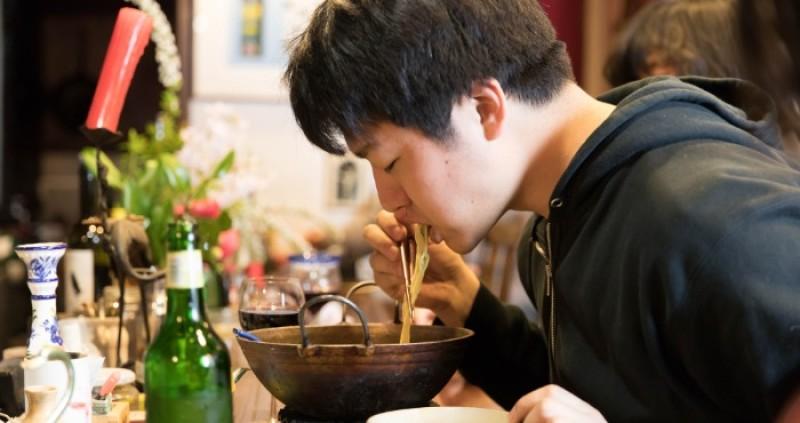
Soba Noodles slurping custom - © Guidable
ATM & Banking Services
Kanazawa provides numerous ATM and banking services to ensure convenient access to funds for visitors. ATMs are readily available across the city, particularly in convenience stores, shopping areas, and near popular tourist spots, with many accepting international cards and offering English-language options. Major banks throughout Kanazawa offer a range of services, including currency exchange and international remittance. Currency exchange services are also available at key locations like the main transportation hub, some hotels, and shopping areas.
Where to Stay in Kanazawa
Kanazawa offers a wide variety of lodging choices to suit different tastes and price ranges. For a touch of luxury, visitors can choose from high-end hotels that offer elegant rooms, fine dining, and prime locations near major attractions. Those seeking an authentic Japanese experience can stay in traditional ryokans, which feature tatami rooms, futon bedding, and communal baths, along with multi-course meals showcasing local cuisine. Mid-range hotels provide a balance of comfort and affordability, with modern amenities and convenient locations.
Articles for you

Explore Yala National Park - Sri Lanka Travel, Asia
Tucked away in Sri Lanka’s southeastern corner, Yala National Park is where wild nature meets deep tradition. Known worldwide for its leopard population, the park is also home to elephants, sloth bears, crocodiles, and hundreds of bird species. Beyond wildlife, Yala opens doors to a cultural landscape dotted with ancient temples, Buddhist ruins, and coastal villages. For travelers seeking more than just a safari, Yala offers a chance to explore eco-tourism, local communities, and sacred heritage sites.
Population: The Yala National Park area doesn’t have a human population.
Economy: The economy around Yala National Park thrives on a blend of eco-tourism, agriculture, and local services. Safari tours, eco-lodges, and cultural experiences drive steady income for nearby towns like Tissamaharama and Kataragama, supporting thousands of families.
Landmarks: Famous for Block I of Yala and wildlife encounters, including elephants, sloth bears, crocodiles, and exotic bird species.

Explore Galle - Sri Lanka Travel, Asia
Nestled on Sri Lanka’s southern coastline, Galle is a vibrant city where history meets the sea. Its cobbled streets, colonial architecture, and serene beaches make it a must-visit destination for travelers seeking a blend of culture, adventure, and relaxation. A UNESCO World Heritage site, Galle captivates visitors with its Dutch Fort, bustling markets, and friendly locals. Whether you’re exploring the ramparts at sunset or savoring fresh seafood by the shore, Galle promises an unforgettable journey into Sri Lanka’s heritage.
Population: Approximately 113,000 in 2023.
Economy: Galle’s economy thrives on tourism, trade, and fisheries. The city’s historic fort, colonial architecture, and coastal charm draw thousands of international visitors each year, making tourism its main economic driver. Fishing remains vital for local livelihoods, supplying fresh seafood across the region.
Landmarks: Famous for the Galle Fort, Dutch Reformed Church & Maritime Museum, and Unawatuna Beach.

Explore Bentota - Sri Lanka Travel, Asia
Nestled along Sri Lanka’s southwestern coast, Bentota is a tropical paradise that blends golden beaches, vibrant culture, and thrilling adventures. Famous for its calm waters, luxury resorts, and scenic river estuary, Bentota has become a top destination for travelers seeking both relaxation and authentic experiences. From serene beach walks at sunrise to adrenaline-pumping water sports, this coastal town offers a perfect balance of leisure and exploration. With its proximity to Colombo and Galle, Bentota is easy to reach, making it an ideal stop for both short escapes and extended holidays.
Population: Approximately 37,000 in 2023.
Economy: Bentota’s economy thrives mainly on tourism, which drives local businesses such as hotels, restaurants, and wellness retreats. The town also benefits from fishing, coconut cultivation, and handicrafts like wood carving and batik textiles. Many residents rely on the growing demand for water sports and Ayurvedic treatments, making tourism the backbone of both income and employment in the area.
Landmarks: Famous for Bentota Beach, Bentota River Safari, and Kande Vihara Temple.

Explore Mirissa - Sri Lanka Travel, Asia
Mirissa is a charming coastal town on Sri Lanka’s southern shoreline. Known for its golden beaches, turquoise waters, and vibrant marine life, it has become a must-visit stop for travelers exploring the island. Many come for whale watching, surfing, and sunset views at Coconut Tree Hill, but Mirissa offers much more than postcard beauty. The fishing boats you see anchored by the bay carry generations of stories. Local traditions, delicious cuisine, and a laid-back rhythm of life shape every visitor’s experience.
Population: Approximately 4,700 in 2023.
Economy: Mirissa’s economy is largely shaped by its coastal location. Fishing has long been the backbone of local livelihoods, with generations relying on the Indian Ocean for income. In recent decades, tourism has become the main driver of growth, thanks to whale watching, surfing, and beachside hospitality.
Landmarks: Famous for Mirissa Beach, Coconut Tree Hill, and Parrot Rock Bridge.

Explore Nuwara Eliya - Sri Lanka Travel, Asia
Tucked away in the Central Highlands of Sri Lanka, Nuwara Eliya is often called “Little England”. With its rolling tea plantations, cool misty mornings, and colonial charm, this mountain town feels like a step into another world. Travelers come here to breathe fresh air, walk through flower gardens, sip the finest Ceylon Tea, and enjoy a pace of life far from the island’s busy cities. Whether you’re drawn by scenic landscapes, heritage architecture, or the warmth of its people, Nuwara Eliya is a destination that blends nature, culture, and history in perfect harmony.
Population: Approximately 781,000 in 2023.
Economy: Nuwara Eliya’s economy thrives mainly on tea production, as it sits in the heart of Sri Lanka’s central highlands, famous worldwide for Ceylon Tea. The city also benefits from a growing tourism industry, attracting visitors with its colonial charm, cool climate, and scenic landscapes.
Landmarks: Famous for Gregory Lake, Hakgala Botanical Garden, and Victoria Park.

Explore Sukau - Malaysia Travel, Asia
Nestled on the banks of the Kinabatangan River in Sabah, Malaysian Borneo, Sukau is a destination where wildlife, culture, and conservation come together. Known as one of Asia’s top spots for river safaris and eco-tourism, this quiet village offers a front-row seat to encounters with Bornean orangutans, pygmy elephants, proboscis monkeys, and exotic birdlife.
Population: Approximately 1,400 in 2019.
Economy: Sukau’s economy is shaped by its riverine location and natural resources. Traditionally, the Orang Sungai community relied on fishing, small-scale farming, and forest gathering for their livelihood. Today, the village has shifted toward eco-tourism, with river cruises, jungle trekking, and homestays providing income.
Landmarks: Famous for the Kinabatangan River cruises, Gomantong Caves, and Ox-bow lakes and wetlands.
